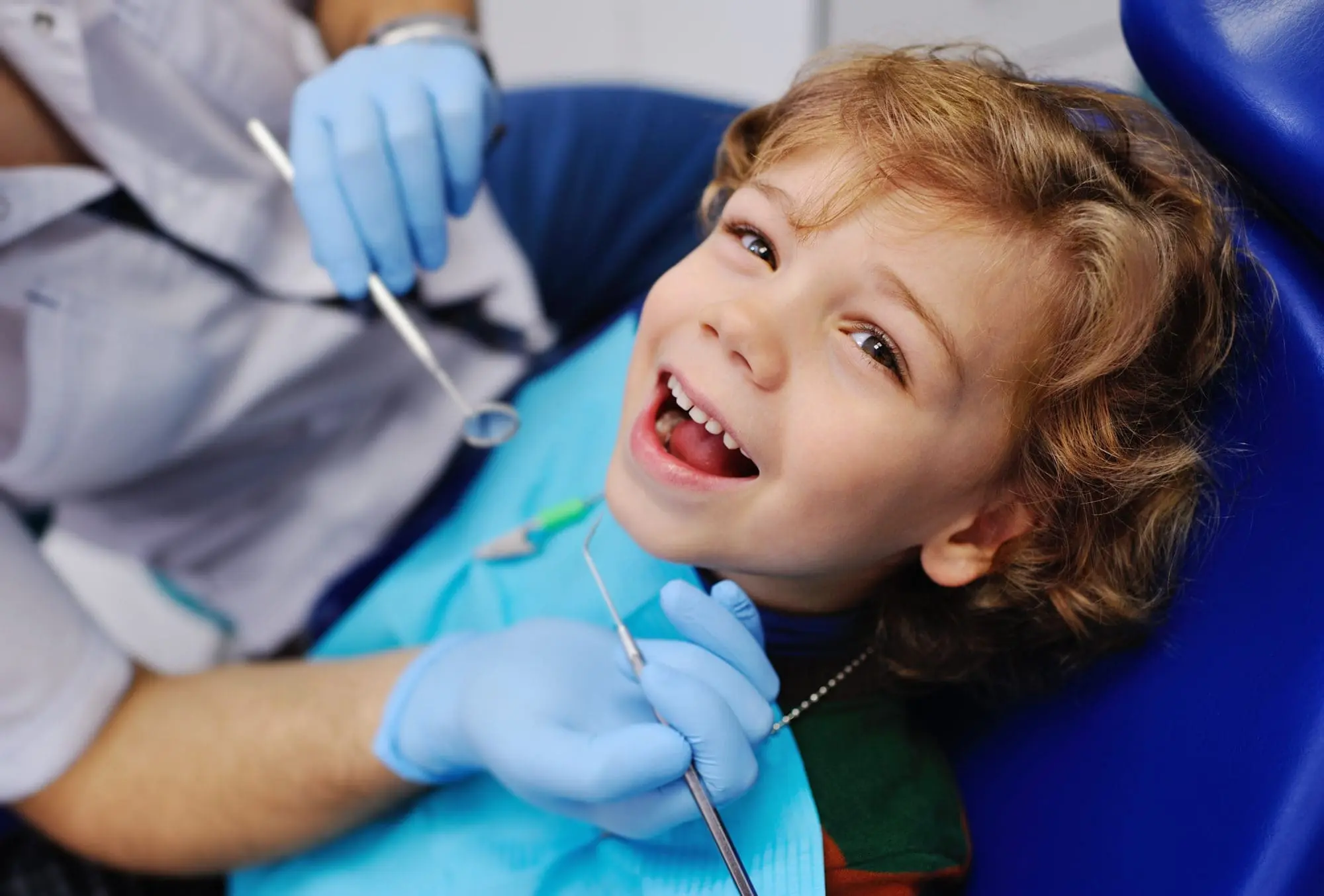
Give Your Child a Lifetime of Smiles
Your child needs teeth and jaws that are properly aligned to have a smile that’s long-lasting and healthy – or, in other words, a good bite. While there is no exact age at which all children should begin orthodontic treatment, Dr. Rodrigo Viecilli and the American Association of Orthodontists recommend that your child should visit the orthodontist around age seven.
By seven, your child’s teeth have developed enough for Dr. Viecilli to spot subtle problems with jaw growth and emerging teeth, without settling too firmly into place.
This check-up may reveal that your child’s bite is fine and braces aren’t necessary. In some cases, Dr. Viecilli may identify a developing problem, but recommend monitoring your child’s growth and development.
Then, when indicated, begin treatment at Limestone Hills Orthodontics during the appropriate time for your child. In other cases, Dr. Viecilli might find a problem that can benefit from early treatment.
What Is Early Treatment?
Early treatment at Limestone Hills Orthodontics may prevent or intercept more serious problems from developing and may make treatment at a later age shorter, simpler, and less expensive.
In some cases, Dr. Viecilli will be able to achieve results that would be much more difficult to achieve if the face and jaws finish growing.
When is the Best Time for Treatment?
While the age that kids get braces may vary, orthodontic treatment in Northwest Austin mainly starts between the ages of 9 and 14, because some orthodontic problems are easier to correct if they’re treated early.
Role of a Children’s Orthodontist
Importance of Early Orthodontic Intervention for Children
Early orthodontic intervention, also known as interceptive orthodontics, is a preventative measure that aims to spot and treat misalignments and other dental issues at an early stage. This is important because it can prevent more serious problems from developing in the future.
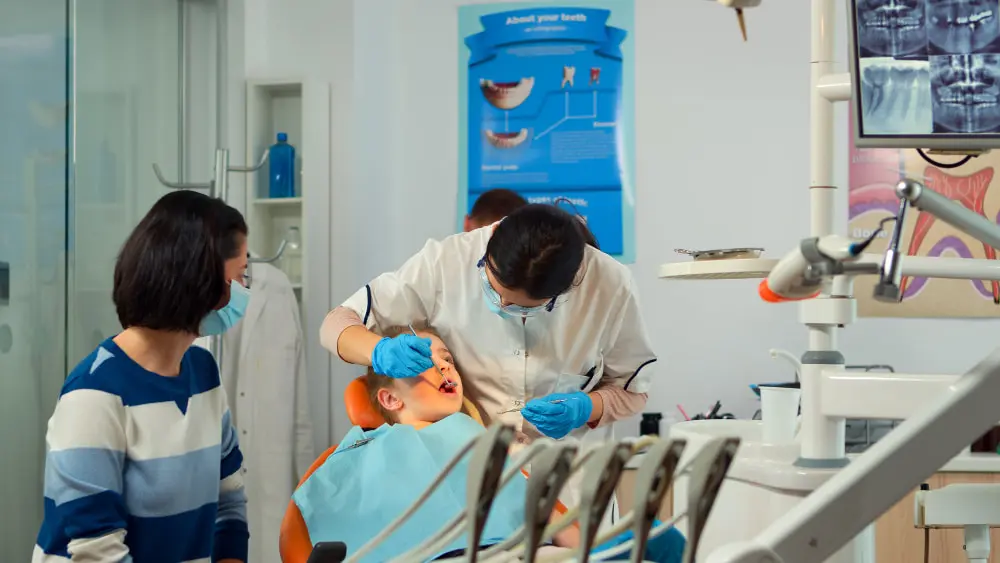
Prevents more serious dental issues
By identifying and treating problems early, orthodontists can prevent them from becoming more serious. This can save time, money, and discomfort in the long run.
Improves appearance and self-esteem
Children with straight, healthy teeth are likely to have better self-esteem and be more confident.
Improves oral health
Straight teeth are easier to clean, reducing the risk of cavities and gum disease.
Benefits of Children’s Orthodontic Treatment
Guide to Improved Oral Health and Hygiene
Enhanced Speech Development
Good oral health plays a significant role in speech development. Teeth, tongue, and lips are essential for pronunciation and articulation. When these are healthy, speech development is enhanced. Here are some tips to ensure good oral health for better speech development:
- Regular dental check-ups: Regular visits to the dentist can help detect any oral health issues early and prevent them from affecting speech development.
- Proper oral hygiene: Brushing and flossing regularly can keep your teeth and gums healthy, which is essential for proper speech.
- Healthy diet: Consuming a balanced diet can provide the necessary nutrients for healthy teeth and gums, which can contribute to better speech development.
Prevention of Future Dental Problems
Preventing dental problems is always better than treating them. Good oral hygiene practices can help prevent a variety of dental issues in the future. Here are some preventive measures you can take:
- Brush your teeth twice a day with a fluoride toothpaste.
- Floss daily to remove plaque from between your teeth and under your gum line.
- Limit sugary drinks and snacks.
- Visit your dentist regularly for check-ups and cleanings.
Boost in Self-Esteem and Confidence
Good oral health can significantly boost your self-esteem and confidence. A healthy, bright smile can make you feel good about yourself and make a positive impression on others. Here are some tips to maintain a healthy smile:
- Brush and floss regularly: Regular brushing and flossing can keep your teeth clean and your gums healthy, giving you a beautiful smile.
- Regular dental check-ups: Regular visits to the dentist can help detect any issues early and keep your smile looking its best.
- Healthy diet: Eating a balanced diet can provide the necessary nutrients for strong, healthy teeth.
Understanding Children’s Orthodontic Treatment
Braces
These are the most common orthodontic appliances. They consist of brackets attached to each tooth and an archwire that connects the brackets. Braces apply pressure to the teeth, gradually moving them into the correct position.
Aligners
These are clear, plastic trays that fit over the teeth. They are a popular choice for adults because they are virtually invisible. Aligners are removable for eating and cleaning.
Retainers
These are used after braces or aligners to keep the teeth in their new position. They can be removable or fixed.
Space maintainers
These are used when a child loses a baby tooth prematurely. They keep the space open to allow the permanent tooth to erupt in the right place.
Importance of Early Orthodontic Evaluation
Early orthodontic evaluation is crucial for detecting and addressing dental issues before they become serious problems. The American Association of Orthodontists recommends that children have their first orthodontic evaluation no later than age seven. At this age, orthodontists can identify issues such as overcrowding, crossbites, and overbites, and begin treatment if necessary. Early treatment can prevent more serious problems in the future and may make treatment at a later age shorter and less complicated.
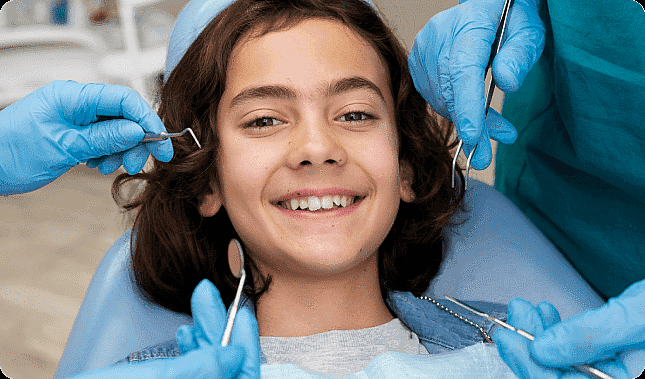
Explanation of the Treatment Process
The orthodontic treatment process begins with a consultation, during which the orthodontist examines the patient’s teeth and jaws, takes X-rays and impressions, and discusses treatment options. Once a treatment plan is agreed upon, the orthodontic appliance is placed. Regular follow-up appointments are necessary to adjust the appliance and monitor progress. Once the desired results are achieved, the appliance is removed and a retainer is often used to maintain the results.
Consultation
Includes examination, X-rays, and impressions.
Appliance Placement
Orthodontic devices are fitted based on the treatment plan.
Follow-ups
Regular adjustments to monitor and ensure progress.
Retention
A retainer is often used after treatment to maintain results.

Duration and Frequency of Appointments
The duration and frequency of orthodontic appointments vary depending on the type of appliance used and the severity of the dental issue. Typically, braces need to be adjusted every four to six weeks, while aligners are usually changed every two weeks. Appointments generally last between 30 to 60 minutes. The total treatment time can range from six months to three years or more, depending on the individual case.
Common Orthodontic Issues in Children

Overbite, Underbite, and Crossbite
Crooked or Misaligned Teeth
Having crooked or misaligned teeth is a common dental issue that affects many people. This conditionas can be caused by various factors such as genetics, thumb sucking during childhood, or even accidents that result in dental trauma. Not only can misaligned teeth affect your smile, but they can also lead to other dental problems such as difficulty in cleaning, which can result in tooth decay and gum disease.
Crowding or Spacing Issues
Crowding or spacing issues occur when there is too little or too much space for the teeth in the mouth. Crowding can make it difficult to clean the teeth properly, leading to an increased risk of tooth decay and gum disease. On the other hand, spacing issues can cause food to get stuck between the teeth, which can also lead to tooth decay. Both crowding and spacing issues can be corrected with orthodontic treatment.
Thumb Sucking and Other Oral Habits
Thumb sucking is a common habit among children. While it’s usually harmless for babies and toddlers, prolonged thumb sucking can lead to dental problems such as misaligned teeth and changes in the roof of the mouth. Other oral habits that can affect the teeth include tongue thrusting and prolonged use of a pacifier or bottle. It’s important to address these habits early to prevent potential dental problems in the future.
Orthodontic Treatment Options for Children
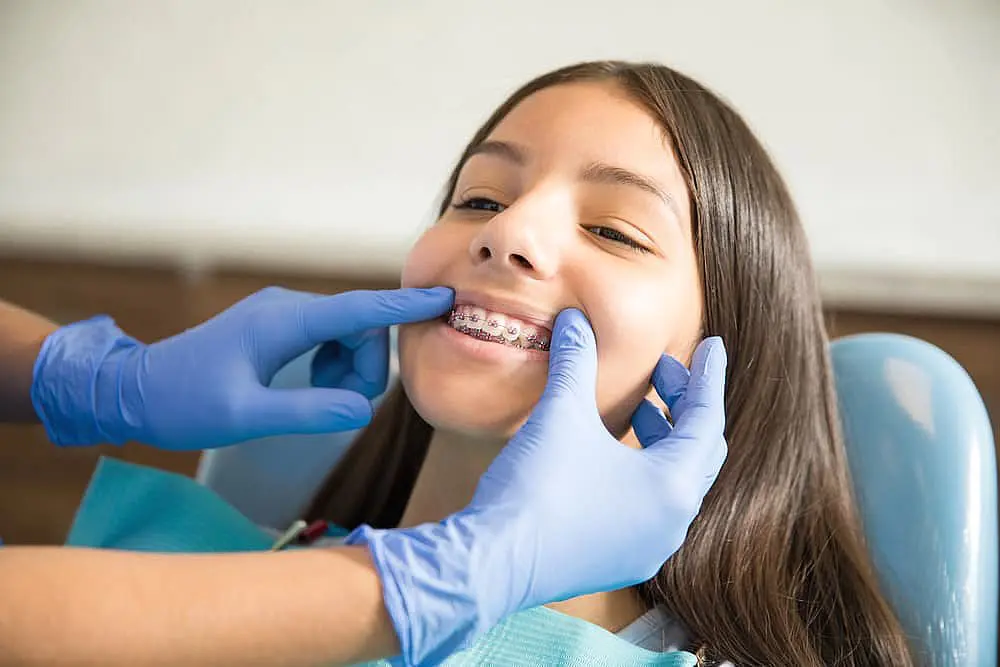
Traditional Braces
Traditional braces have been around for many years and are the most common type of orthodontic appliance. They are highly effective in treating a wide range of dental issues, from simple to complex cases.
Components of Traditional Braces
Traditional braces consist of brackets, archwires, and ligature elastics. The brackets are attached to each tooth, and the archwire is threaded through them. The ligature elastics hold the wire in place.
Benefits of Traditional Braces
Traditional braces are highly effective in correcting severe misalignments and malocclusions. They are also durable and can withstand most types of food.
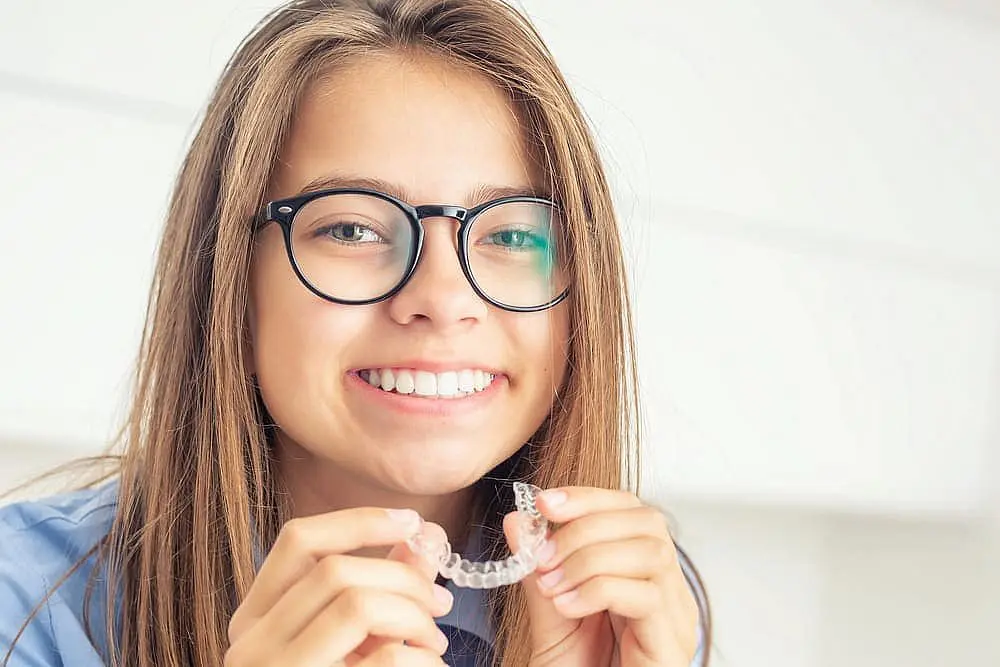
Clear Aligners
Clear aligners, such as Invisalign, are a modern alternative to traditional braces. They are virtually invisible and can be removed for eating and cleaning.
How Clear Aligners Work
Clear aligners work by applying consistent pressure on the teeth to gradually shift them into the desired position. Each set of aligners is custom-made to fit the patient’s teeth and is replaced every two weeks to progress the treatment.
Advantages of Clear Aligners
Clear aligners are discreet, comfortable, and convenient. They allow patients to eat whatever they want and make oral hygiene easier.
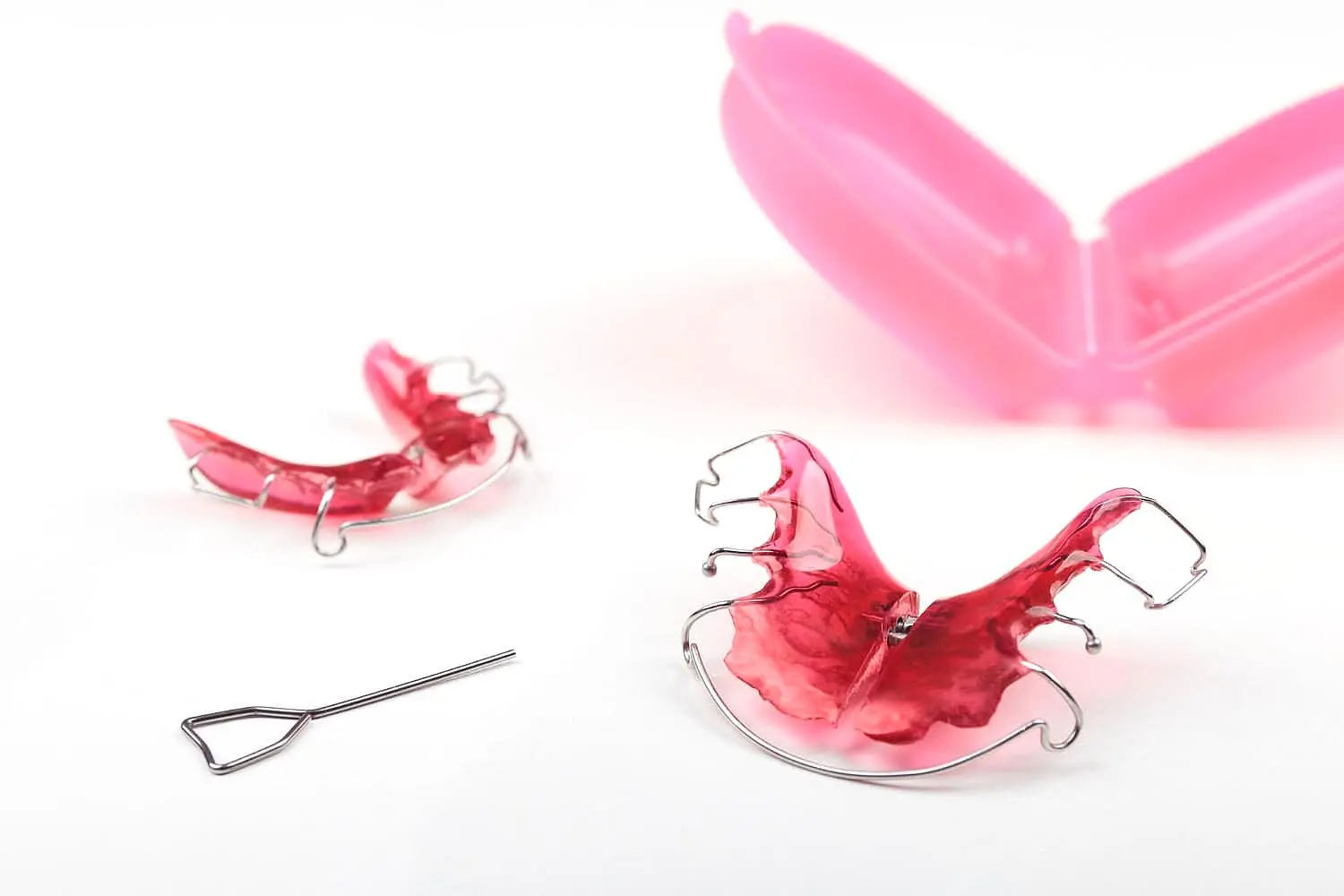
Functional Appliances
Functional appliances are used to correct jaw growth problems. They are usually recommended for children and teenagers whose jaws are still developing.
Types of Functional Appliances
There are several types of functional appliances, including Twin Block, Bionator, and Herbst appliances. Each type is designed to address specific jaw growth issues.
Benefits of Functional Appliances
Functional appliances can correct jaw discrepancies, improve facial aesthetics, and prevent future dental problems.

Retainers
Retainers are used after orthodontic treatment to maintain the new position of the teeth. They prevent the teeth from shifting back to their original position.
Types of Retainers
There are two main types of retainers: removable and fixed. Removable retainers can be taken out for cleaning, while fixed retainers are permanently bonded to the back of the teeth.
Importance of Retainers
Wearing a retainer is a crucial part of the orthodontic process. It ensures the long-term success of the treatment and helps maintain a beautiful smile.
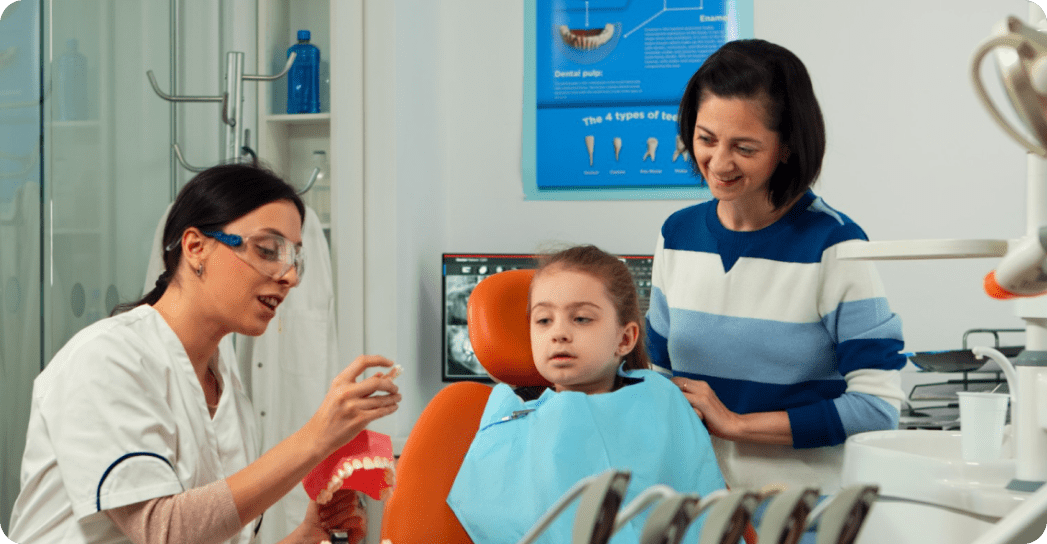
Importance of Early Orthodontic Intervention
- Prevents Severe Orthodontic Issues: By addressing potential problems early on, interceptive orthodontics can prevent the development of more severe orthodontic issues in the future. This can save time, money, and discomfort down the line.
- Improves Appearance and Self-Esteem: Children with straight, healthy teeth are likely to feel more confident and have higher self-esteem. This can have a positive impact on their social interactions and overall well-being.
- Improves Oral Health: Straight teeth are easier to clean, reducing the risk of cavities and gum disease. Early orthodontic treatment can therefore contribute to better oral health in the long term.
Age-Appropriate Orthodontic Treatments
Orthodontic treatments are not one-size-fits-all. The type of treatment and the best time to start it can vary depending on the child’s age and the specific issues they are facing.
- Early Treatment (Ages 6-10): This is the ideal time for interceptive orthodontics. At this age, the jaw is still growing, which makes it easier to correct issues such as crossbites, crowding, and the development of harmful habits like thumb sucking.
- Adolescent Treatment (Ages 11-15): By this age, most of the permanent teeth have erupted, making it a good time to correct alignment issues. Braces are the most common treatment during this stage.
- Adult Treatment (Ages 16 and up): Orthodontic treatment is not just for children and teenagers. Adults can also benefit from orthodontics to improve the appearance and health of their teeth. However, treatment may take longer because the jaw has stopped growing.
Long-Term Impact of Early Intervention
Early intervention in orthodontics can have a significant long-term impact on a person’s oral health and overall well-being.
- Prevents Future Dental Problems: By addressing orthodontic issues early on, interceptive orthodontics can prevent the development of more serious dental problems in the future, such as tooth decay, gum disease, and tooth loss.
- Improves Oral Function: Correcting alignment issues can improve oral function, making it easier to eat, speak, and breathe.
- Saves Time and Money: Early intervention can reduce the need for more extensive (and expensive) treatments later on. It can also shorten the duration of treatment, saving time and reducing inconvenience.
Finding the Right Children’s Orthodontist
When selecting an orthodontist for your child, it’s important to consider their qualifications and experience to ensure they are well-suited to your family’s needs. Look for an orthodontist who has advanced training in orthodontics and experience working with children. Additionally, practical factors such as the office location, convenient hours, and treatment costs, including payment options or insurance coverage, should be taken into account. Taking the time to carefully choose the right orthodontist helps ensure your child receives excellent care and a positive overall experience.
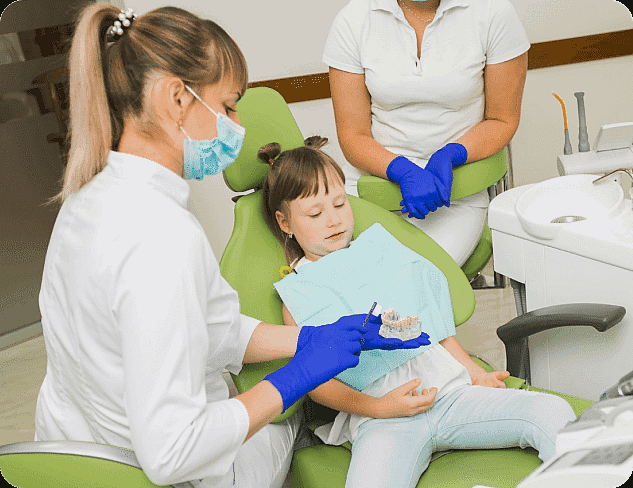
Qualifications and Credentials to Look for
Choosing a pediatric orthodontist for your child is a significant decision. It’s crucial to ensure that the orthodontist you choose is qualified and has the necessary credentials. Here are some key qualifications and credentials to look for:
- A degree from an accredited dental school
- Specialty training in orthodontics
- Board certification from the American Board of Orthodontics
- Membership in professional organizations such as the American Association of Orthodontists
- Experience in treating children and adolescents
Considerations for Choosing a Pediatric Orthodontist
While qualifications and credentials are important, there are other factors to consider when choosing a pediatric orthodontist. Here are some considerations to keep in mind:
- Location: The orthodontist’s office should be conveniently located near your home or your child’s school.
- Office hours: The office hours should be compatible with your schedule.
- Cost: The cost of treatment should be within your budget. Check if the orthodontist accepts your insurance.
- Reputation: Check online reviews and ask for recommendations from friends and family.
Importance of a Child-Friendly and Comfortable Environment
A child-friendly and comfortable environment is essential when choosing a pediatric orthodontist. Your child may feel anxious about orthodontic treatment, and a welcoming environment can help alleviate their fears. Look for an office that is bright, clean, and has a play area or activities for children. The staff should be friendly and patient, and the orthodontist should be able to explain procedures in a way that your child can understand.
Preparing Your Child for Orthodontic Treatment
Preparing your child for orthodontic treatment can make the process smoother and less stressful. Here are some tips:
- Explain the process: Talk to your child about what to expect during orthodontic treatment. Use simple, non-threatening language.
- Visit the office: Take your child to visit the orthodontist’s office before treatment begins. This can help your child become familiar with the environment and the staff.
- Answer questions: Encourage your child to ask questions and express their concerns. Answer their questions honestly and reassure them that it’s normal to feel nervous.
- Stay positive: Maintain a positive attitude about orthodontic treatment. Remind your child that the end result will be a beautiful, healthy smile.
Communicating with Your Child About the Process
One of the most important aspects of any medical or dental treatment is communication. This is especially true when the patient is a child. Here are some tips to help you communicate effectively with your child about their dental treatment.
- Use Simple Language When explaining the treatment process to your child, use simple, easy-to-understand language. Avoid using medical jargon that may confuse or scare them.
- Be Honest It’s important to be honest with your child about what they can expect during the treatment. If there may be some discomfort, let them know, but also reassure them that the dentist will do everything possible to minimize it.
- Involve Them in the Process Allow your child to ask questions and express their feelings about the treatment. This can help them feel more involved and less anxious.
Addressing Common Concerns and Fears
It’s normal for children to have concerns and fears about dental treatment. Here’s how you can address them.
- Reassure Them Reassure your child that it’s normal to feel nervous about dental treatment, but that the dentist is there to help them and keep their teeth healthy.
- Explain the Importance of Good Oral Health Explain to your child why maintaining good oral health is important. This can help them understand the need for the treatment.
- Discuss What to Expect Discuss with your child what they can expect during and after the treatment. This can help alleviate any fears or concerns they may have.
Maintaining Good Oral Hygiene During Treatment
Maintaining good oral hygiene during treatment is crucial for the success of the treatment and the health of your child’s teeth. Here are some tips to help your child maintain good oral hygiene.
- Brush and Floss Regularly Encourage your child to brush their teeth at least twice a day and floss daily. This can help prevent plaque buildup and tooth decay.
- Follow the Dentist’s Instructions Make sure your child follows any specific oral hygiene instructions given by the dentist. This may include using a special mouthwash or avoiding certain foods.
- Regular Dental Checkups Regular dental checkups are important for monitoring your child’s oral health and the progress of the treatment. Make sure to schedule and attend these checkups.
Post-Treatment Care and Maintenance
Importance of Wearing Retainers
Retainers are a crucial part of your orthodontic treatment. They are designed to hold your teeth in their new positions after braces or other orthodontic appliances have moved them into the correct alignment. Without a retainer, your teeth can quickly shift back to their original positions, undoing all the hard work and time you invested in your orthodontic treatment.
Benefits of Wearing Retainers
- Retainers help maintain the perfect alignment of your teeth, ensuring a beautiful smile.
- They prevent teeth from shifting back to their original positions, saving you time and money in the long run.
- Retainers can help with minor speech issues that can be caused by misaligned teeth.
- They can also help maintain the improved oral hygiene that often comes with straighter teeth.
Follow-up Appointments and Monitoring
Regular follow-up appointments with your orthodontist are crucial to ensure that your retainer is doing its job properly. These appointments allow your orthodontist to monitor your teeth and make any necessary adjustments to your retainer.
What to Expect During Follow-up Appointments
- Your orthodontist will check the fit of your retainer and make any necessary adjustments.
- They will examine your teeth to ensure they are staying in the correct positions.
- Your orthodontist may take X-rays or make molds of your teeth to compare with previous records and ensure everything is as it should be.
Long-term Oral Health Maintenance
Maintaining good oral health is a lifelong commitment, and wearing your retainer as instructed is a big part of that. But it’s not the only thing you need to do to keep your teeth healthy and your smile looking its best.
Oral Health Maintenance Tips
- Brush your teeth at least twice a day, and floss daily.
- Visit your dentist regularly for check-ups and cleanings.
- Eat a balanced diet and limit sugary snacks and drinks.
- Don’t smoke or use other tobacco products.
- Wear a mouthguard when playing sports to protect your teeth from injury.
Integration of Pertinent Topics
Permanent Tooth Eruption and Its Relation to Orthodontic Treatment
The eruption of permanent teeth is a significant milestone in a child’s oral development. This process typically begins around the age of six and continues until the late teens. The timing and sequence of tooth eruption can greatly influence the need for orthodontic treatment.
Understanding Tooth Eruption
Permanent teeth replace the primary or ‘baby’ teeth in a specific order. Any deviations from this order can lead to overcrowding, misalignment, or gaps, which may necessitate orthodontic intervention.
The Role of Orthodontics
Orthodontic treatment can guide the eruption of permanent teeth into their correct positions, preventing future dental issues. Early orthodontic assessment can help identify potential problems and implement timely interventions.
Straightening Teeth in Children and Its Impact on Oral Function
Straightening teeth in children not only improves their smile but also significantly enhances their oral function. This includes better chewing efficiency, clearer speech, and easier oral hygiene maintenance.
Benefits of Straight Teeth
- Improved Chewing: Straight teeth align properly to break down food effectively, aiding digestion.
- Clear Speech: Misaligned teeth can interfere with the proper pronunciation of certain sounds, leading to speech difficulties. Straight teeth can help overcome this issue.
- Easier Oral Hygiene: Straight teeth are easier to clean, reducing the risk of cavities and gum disease.
Transition from Child to Adult Orthodontic Care
As children grow, their orthodontic needs change. Transitioning from child to adult orthodontic care involves a shift in treatment approach to accommodate the continuing growth and development of the oral structures.
Continuity of Care
Continuity of care is crucial in orthodontics. Regular monitoring ensures that the treatment plan evolves with the child’s growth, ensuring optimal results.
Role of Oral Surgery in Children’s Orthodontic Treatment
In some cases, oral surgery may be necessary as part of a child’s orthodontic treatment plan. This could involve the extraction of overcrowded teeth or the correction of jaw abnormalities.
When is Oral Surgery Necessary?
Oral surgery is typically considered when non-surgical orthodontic treatments are insufficient to correct the dental issue. The decision is made in consultation with the orthodontist and oral surgeon, considering the child’s overall health and well-being.
Achieving a Healthy Smile through Children’s Orthodontic Treatment
Orthodontic treatment in children is about more than just aesthetics. It’s about setting the foundation for a lifetime of good oral health. With early intervention, regular monitoring, and appropriate treatment, children can achieve a healthy, confident smile that lasts a lifetime.
